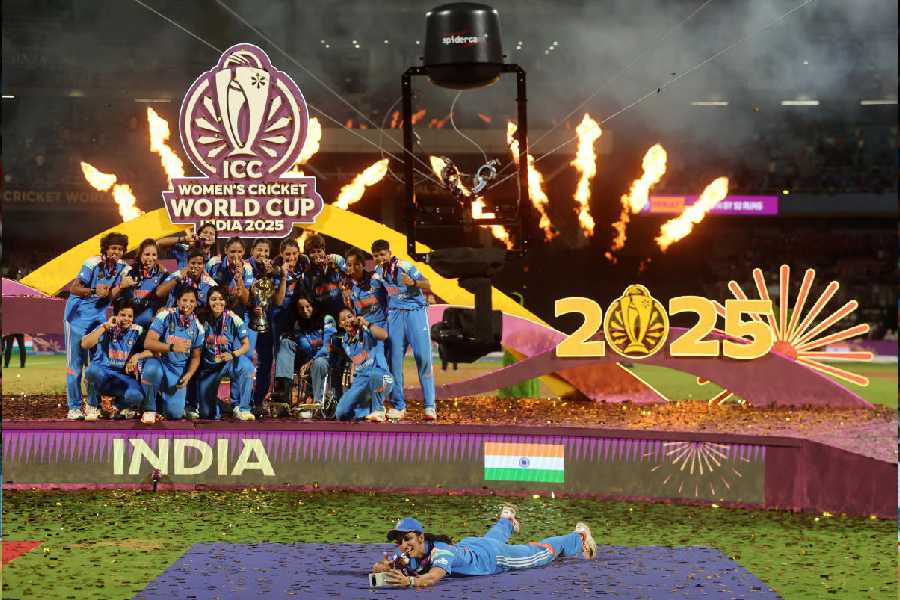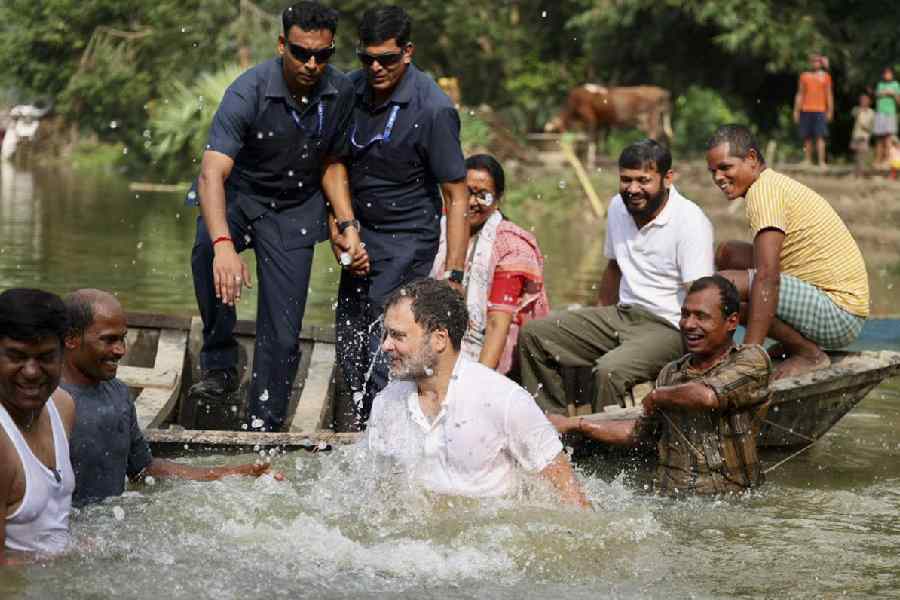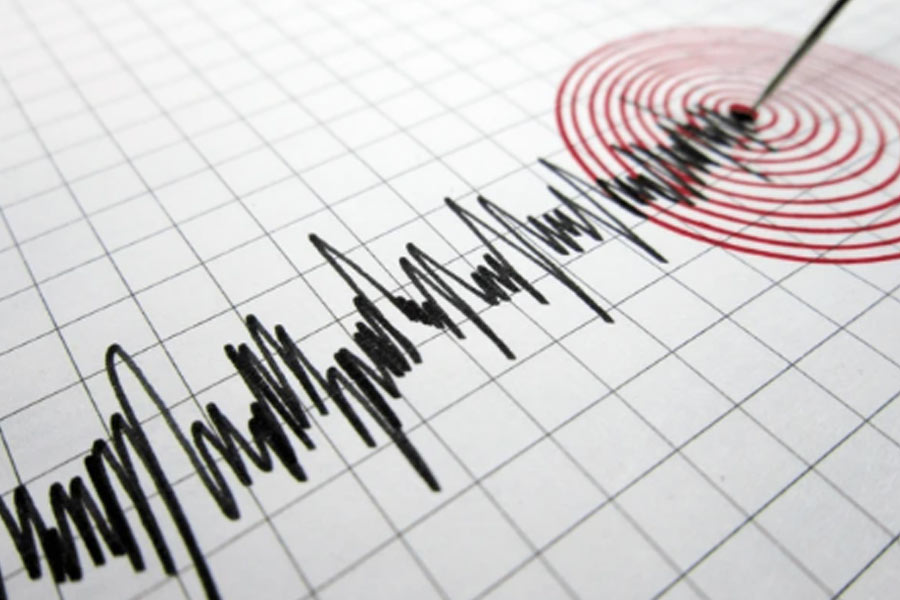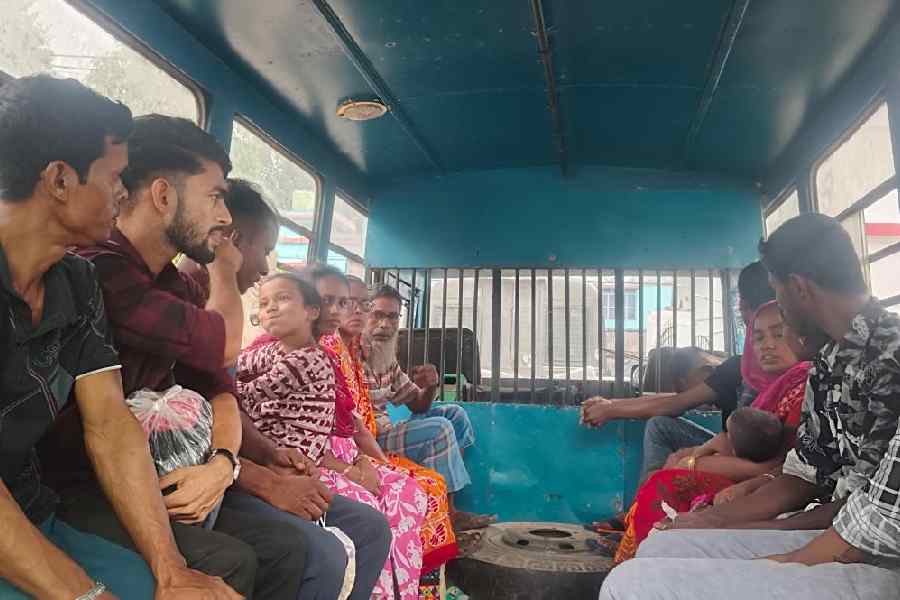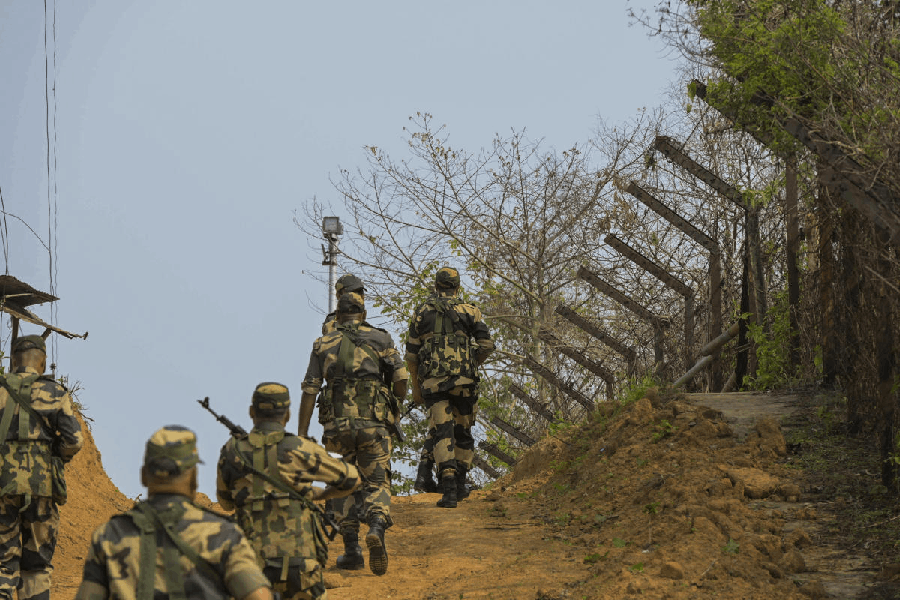 |
| File picture of the INS Kolkata |
New Delhi, Aug. 13: Israel’s bombing of the Gaza Strip has combined with a technical failure by India’s defence research outfit to delay a missile that was to be installed on the INS Kolkata, a warship scheduled to be commissioned by Prime Minister Narendra Modi on Saturday.
The case illustrates just how global conflicts immediately impact India, particularly its defence preparedness because the Indian military is so dependent on imports and foreign know-how.
The commissioning of a warship means that it is battle-ready.
But the INS Kolkata is bereft of its long-range surface-to-air missile (LR-SAM), its main defence against aerial threats, and an active towed array sonar (ATAS), one of two sensors to detect underwater (submarine) threats, senior officers admitted today.
“We are concerned,” said Vice Admiral A.V. Subhedar, controller of warship production and acquisition. “But we expect that the missile will be available shortly; the launchers are ready.”
The LR-SAM was to be co-developed by India’s Defence Research and Development Organisation (DRDO) and Israel Aircraft Industries under a 2006 agreement.
 |
| The crest of the INS Kolkata which shows the Howrah bridge and a Royal Bengal Tiger |
Rear Admiral A.B. Singh, the Assistant Chief of Naval Staff (policy & plans), said compartments of the missile — also called the Barak NG (next generation) — were ready but it is to be integrated after being test-fired in Israel.
A previous test of the missile in February failed “because there were oscillations and it did not meet all parameters”.
A full test of the missile — when it will be fired from a launcher and will have to shoot down an incoming missile — is now likely in Israel only towards the end of September.
The test was delayed because of Israel’s bombardment of the Gaza Strip after rockets fired by the Hamas into Israel. Many international airlines cancelled flights to Tel Aviv till a shaky ceasefire began earlier this week.
The 6,800-tonne INS Kolkata is the first of Project 15A ships that will also have ships named after Kochi and Chennai.
Called a “stealth destroyer”, the Kolkata was due in 2010. It is already four years late. Despite the delay, the DRDO has not been able to complete the missile that would have a range of up to 70km. The Barak NG is meant to be the shield for not only the INS Kolkata but also of a carrier battle-group, if that is how she were to be tasked.
The project was first sanctioned in 2003 for Rs 3,580 crore. In 2011 the cost was hiked to Rs 11,662 crore. The Kolkata is also the “test-bed” for another class of four ships, called the Project 15B. It has an array of new systems, mostly developed indigenously, but the absence of the LR-SAM and the ATAS can limit the roles for which she is designed.
For the Directorate of Naval Design itself, the wing Vice Admiral Subhedar heads, the Kolkata may have been the star accomplishment in its 50th year. The engines of the Kolkata — gas turbines from Zorya of Ukraine — are also to be the main propulsion system for the Project 15B ships.
The assessment by the navy is that the troubles in Ukraine and Russia will not immediately affect the Zorya manufacturing facility in Ukraine. But the navy has said that it is scouting for other original equipment manufacturers (OEMs) for spares and supplies for the ships that are on order.
“The situation in Ukraine has brought to the forefront a fresh challenge to peace and stability in the region and a prolonged stand-off could have an adverse impact on international security and the global economy,” warns the annual report of the ministry of defence (2013-2014) released today.
A second ship to be commissioned this month, on August 23, is the P28 Kamorta built in Calcutta by the Garden Reach Shipbuilders and Engineers.
The Kamorta is described as an anti-submarine warfare (ASW) corvette. The principal director of naval design, Commodore B.S Nagpal, said the Kamorta was unique because of “90 per cent indigenisation”.
But the Kamorta, like the Kolkata, will not have the towed array sonar (TAS). In other words, the anti-submarine platform will not have a main submarine-detection sensor.
Defence minister Arun Jaitley said in Parliament last week that a German firm, Atlas Electronik, had been selected to supply the TAS — a tethered sensor — for not only the Kamorta but also for almost all frontline warships. Navy sources said they were also pursuing a programme with the DRDO to produce a TAS.
The navy currently has 44 ships on order, all being made in Indian shipyards, eight of them in the private sector.


